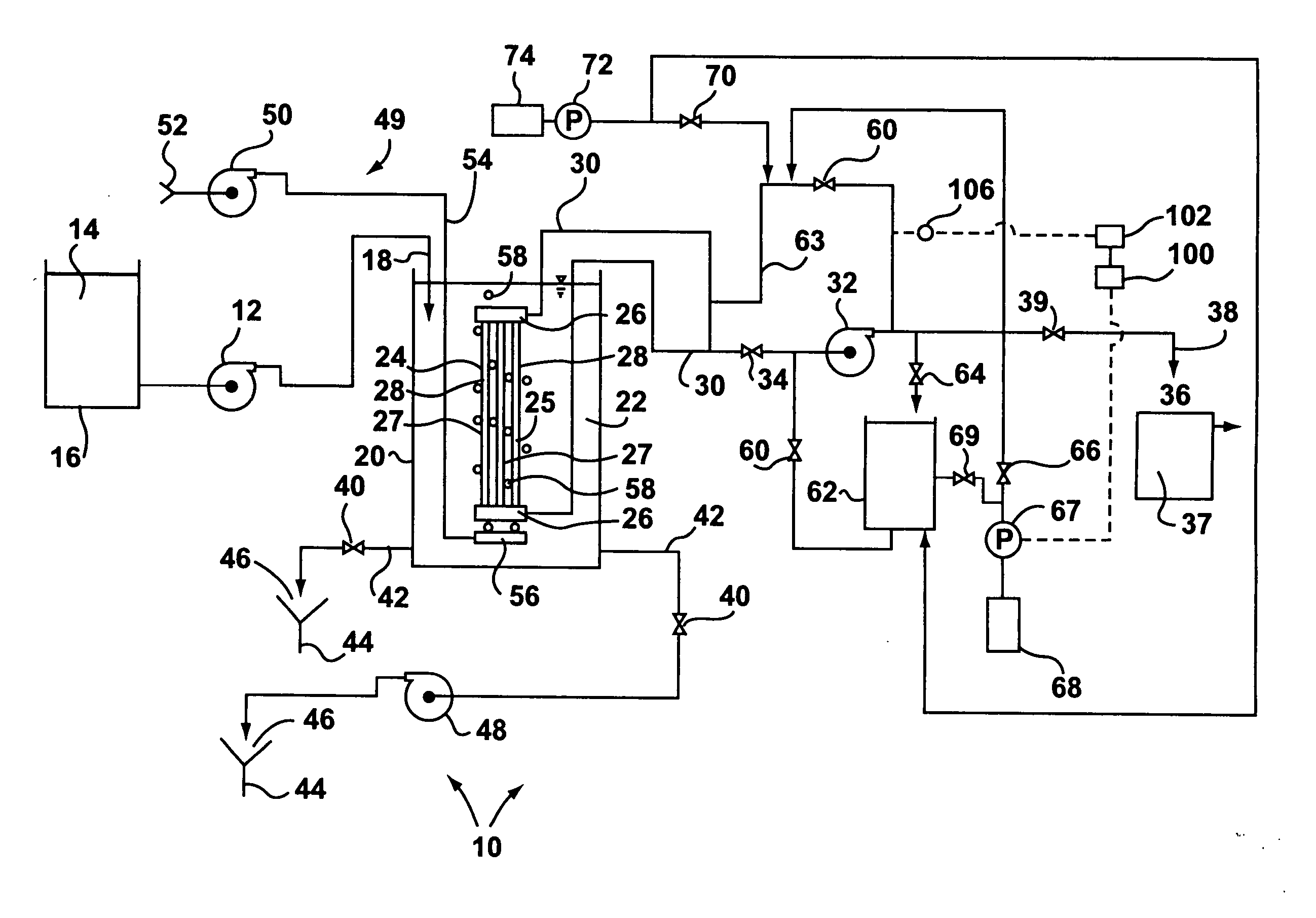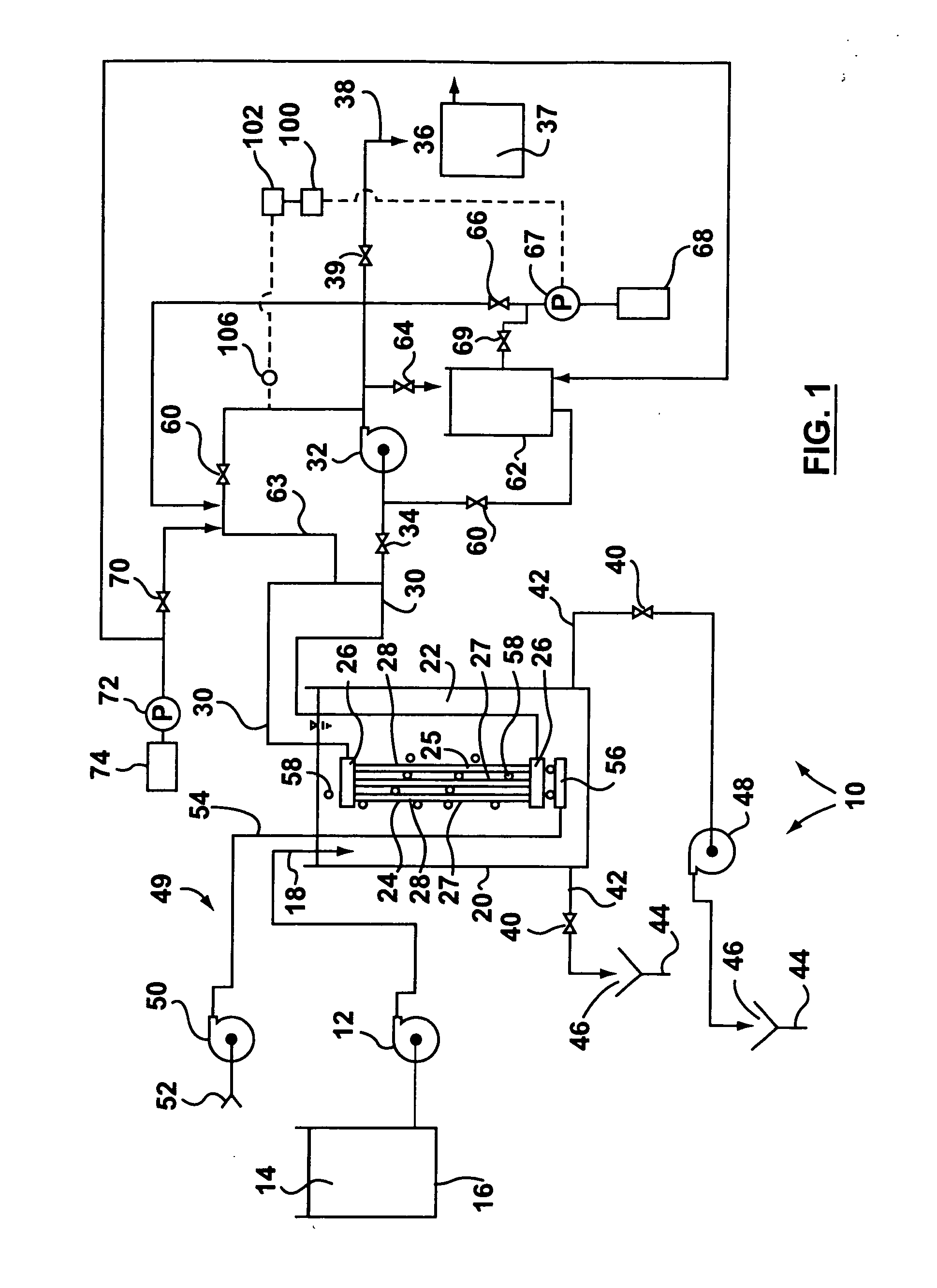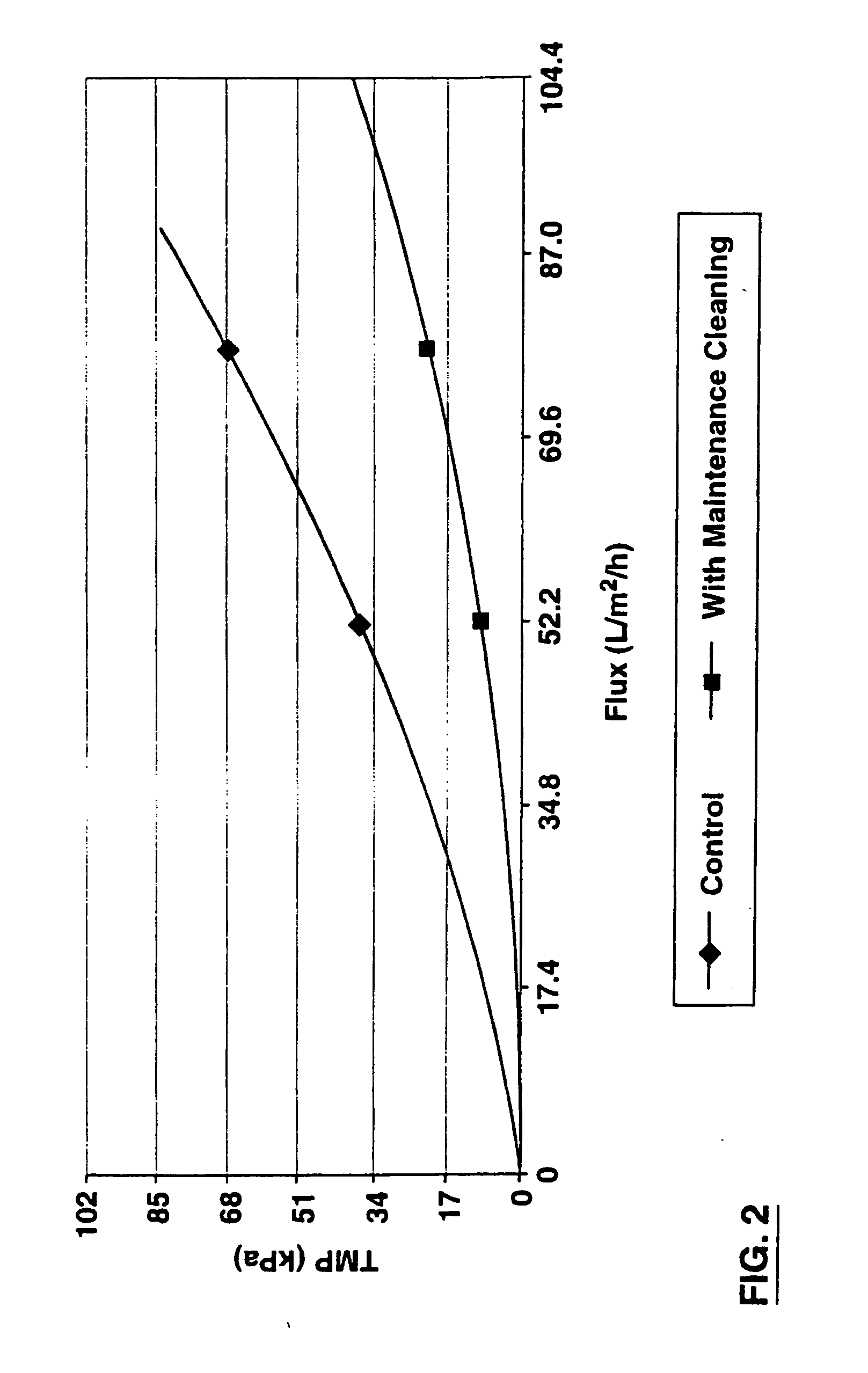Maintenance cleaning for membranes
- Summary
- Abstract
- Description
- Claims
- Application Information
AI Technical Summary
Benefits of technology
Problems solved by technology
Method used
Image
Examples
example 1
[0053] Waste Water Treatment
[0054] An experimental membrane bioreactor using a ZEEWEED 500 membrane module having 46 square metres of membrane surface area was built for treating waste water and, in particular, for carbon oxidation, nitrification and phosphorus removal. At all times, the flow rate of permeate through the membranes was maintained at 25.5 / m2 / h and the solids concentration in the bioreactor averaged between 15 g / l and 20 g / l. The average flow through the bioreactor was 1,000 cubic metres per day and the peak flow was 2,000 cubic metres / day.
[0055] The bioreactor was first operated without cleaning according to the invention for 90 days. Permeability was not sustainable and decreased continuously. At the end of this time, permeability of the membranes had dropped to less than 75 L / m2 / h / bar.
[0056] The bioreactor was then operated with a fresh membrane module for 90 days with maintenance cleaning according to the present invention. The cleaning was performed twice per w...
example 2
[0058] Potable Water
[0059] An experimental membrane bioreactor using ZEEWEED 10 membrane modules having 0.9 square metres of membrane surface area each was built for treating lake water to produce potable water. All experiments were performed at constant flux in which the flow is kept constant and the transmembrane pressure (TMP) was allowed to increase as membranes fouled. The raw water conditions were as follows: [0060] 1 Temperature (C.) 10-20 TOC (mg / l) 3.0-5.0 Turbidity (ntu) 4.0-9.0 Apparent Colour (Pt Co units) 10-50 True Colour (Pt Co units) 5.0-20.0
[0061] Experiments were performed with and without maintenance cleaning and at different fluxes. Cleaning events were done three times per week with 100 mg / l NaOCl for 30 minutes. The cleaning dosage was between 320 and 430 mg NaOCl per square metre of membrane per week.
[0062]FIG. 2 summarises the results obtained with and without maintenance cleaning. Each test lasted about 45-60 days. After an initial increase in TMP, the TM...
example 3
[0064] Heated Water as a Chemical Cleaner
[0065] An experimental membrane bioreactor was built for treating a typical municipal waste water. ZW10 membrane modules were used each having a surface area of 0.9 square metres. The concentration of biomass was between 15 to 20 gMLSS / L, corresponding to a volumetric loading of between 1.2 to 2.3 kg COD / m3 / d. COD and TKN removal were better than 95% with dissolved oxygen residuals between 0.5 and 1.5 mg O2 / L in the tank.
[0066] Experiments were performed at a constant transmembrane pressure of 34 kPa and the permeate flux was allowed to decline as the membranes fouled. Two modules were tested under the same conditions, one with and one without heated water maintenance cleaning. For cleaning, heated water maintenance cleaning was performed with water heated to 40C for 1 hour every day. FIG. 3 shows the net flux results as a function of time and indicates that the heated water maintenance cleaning resulted in an improvement in flux averaging ...
PUM
 Login to View More
Login to View More Abstract
Description
Claims
Application Information
 Login to View More
Login to View More - R&D
- Intellectual Property
- Life Sciences
- Materials
- Tech Scout
- Unparalleled Data Quality
- Higher Quality Content
- 60% Fewer Hallucinations
Browse by: Latest US Patents, China's latest patents, Technical Efficacy Thesaurus, Application Domain, Technology Topic, Popular Technical Reports.
© 2025 PatSnap. All rights reserved.Legal|Privacy policy|Modern Slavery Act Transparency Statement|Sitemap|About US| Contact US: help@patsnap.com



